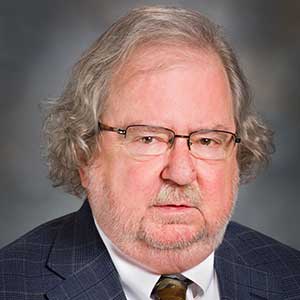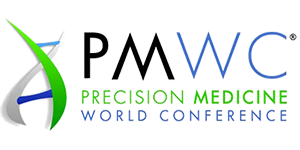Thursday, October 27, 2016
Does Immunotherapy Measure Up to the Hype?
Brigitte Ganter, PhD
Disclosures | October 24, 2016
Editor’s Note: The emergence of immunotherapy has redefined cancer medicine. Among those who continue to redefine this expanding arena of clinical research, James P. Allison, PhD, of MD Anderson Cancer Center, holds a special place. At the Precision Medicine World Conference (PMWC) 2017, taking place in Silicon Valley, Dr Allison will be honored with PMWC’s Pioneer Award for his discovery of immune checkpoint blockade. He will also chair PMWC’s immunotherapy/immuno-oncology session on Emerging Applications and Therapies. Recently, he spoke with Brigitte Ganter, PhD, on behalf of PMWC, and offered his perspective on advances in immunotherapy and what they may mean to the future of cancer medicine.
The Promise of a Cure—for Some
PMWC: Immunotherapy is considered a huge game-changer for cancer therapy. What are some of the key developments in recent years?
Dr Allison: One of the most exciting realizations in recent years is that a fraction of patients who have received these immunotherapies can actually be cured. A good example is ipilimumab (Yervoy®), in which case a recent meta-analysis[1] found that over 20% of melanoma patients who received a single round of treatment of ipilimumab (a monoclonal antibody that targets CTLA-4) were alive 10 years later with no sign of being ill and with no further treatment required. This is remarkable, considering that when we started working on immunotherapies there were no effective treatments for melanoma available, and the immediate life expectancy was barely 11 months. Furthermore, combination therapies have proven to be even more effective (eg, combinations of ipilimumab and nivolumab [Opdivo®], an anti-PD-1 monoclonal antibody, which works as a checkpoint inhibitor), with a 50% response rate.[2,3] At the moment, we do not have information on how durable this combination therapy will be, but there is no reason to believe that it won’t be just as good as monotherapy.
PMWC: How can we control the “buzz” around immunotherapy, given that it works in some patients and not others?
Dr Allison: The durable effects to date have been seen in a fraction of patients only, and we need to make sure that people realize that. We observed that a lot of buzz is coming from clinicians themselves, who are treating the patients and seeing firsthand how the patients respond to the treatment compared with what was available as therapies about 10 years ago. We do have to set realistic expectations and we still have a long way to go.
In addition, immunotherapies have not been as effective across some types of cancers, and this is a challenge that we really have to work on. Mind you, it is a good problem to have! I believe we know what the issues are and what we can do. Yes, there is a lot of optimism, but there is still a long way to go.
The hard work in front of us is in understanding the immune response and the changes to the tumor microenvironment. This will allow us to make rational choices with combinations—including not only immunotherapy agents but also combinations with conventional therapies (eg, radiation, some chemotherapies). One thought is to enhance the effect of the immunotherapies by inducing the killing of tumor cells and releasing antigens that would basically provide an in vivo immunization onto which the immunotherapy drugs connect. This has become clear as we have observed this in a number of patients for certain types of cancers.
PMWC: Will immunotherapy over time become standard of care for most cancers?
Dr Allison: Immunotherapy by itself will become the standard of care for some cancers. It already pretty much is the standard of care for melanoma. For other types of cancers, it will be a part of it, but it will not be the standard of care for all cancers. For example, if you treat with a checkpoint blocker, you will help prime an event—specifically prime T cells or rescue T cells that are already in the right place and just need to be moved into an active state. If, on the other hand, you could start a new immune response (eg, combination treatment with cytotoxic agents), then I believe we will see a lot more responses.
PMWC: Immunotherapy has potential for dangerous side effects such as autoimmune diseases. How advanced is our understanding of how to fine-tune the potency of these new medicines in order to identify and stay within a safe therapeutic window?
Dr Allison: First, I’d like to highlight that the adverse events that are associated with these types of drugs are nothing like the adverse events that are associated with a drug like cisplatin, for example, or other oncology drugs that are commonly used now.
As with anything new, there are surprises and we have to learn from them. There have been algorithms developed that are pretty effective in dealing with adverse events, but I would like to point out that the notion that the main adverse event associated with these drugs involves autoimmunity is not actually correct. In reality, only a small fraction of autoimmune-related adverse events are associated with immunotherapies. The observed adverse events that occur are colitis, uveitis, or sometimes hepatitis[4]—many types of “itises” that really are inflammatory conditions resulting in dysregulation of the immune system. But in most of those cases, there is no evidence that the target is actually a self-antigen. Furthermore, many of these adverse events are manageable and involve administration of some steroids, which stop the disease and of which patients can be weaned off. In most cases, these observed side effects don’t come back.
PMWC: What is your view on the criticality of patient-selection biomarkers to guide clinicians to patient pools with the highest positive outcome probability? Are current approaches (such as screening for presence of critical molecular ligands) the way to go?
Dr Allison: My best answer is yes, but at the present time our knowledge is not sufficient. PD-L1 is a dynamic marker that is induced on tumor cells and that changes with time and location of the tumor, which means that it is not an ideal marker to select patients. However, just because you have an archival biopsy that fails to show the particular marker at a particular time does not necessarily mean that you can tell what is going on with the patient undergoing a treatment. Having said this, I am not quite sure what the PD-L1 assay is detecting, specifically whether it is counting PD-L1 on the tumor or counting it on the immune cells as well. It turns out that we do not yet really know which is more important from a biology perspective. They both do play a role, but we (and others as well) have shown that PD-L1 is expressed by the tumors and some of the macrophages, and is also found to be expressed on T cells themselves. We need to work through this and do some reverse translation to figure that out.
If you decide not to treat every patient across many cancers, you are giving certain patients no alternative. Of course, the upside is enriched numbers for the pharmaceutical companies, but the downside is that you are excluding people from a possible beneficial treatment. Having said this, I believe that biomarkers will be useful in deciding whether to treat just with one agent or whether you need a combination treatment. Yet, we definitely are still missing a good baseline that can tell you who is going to respond. At this moment, you can’t tell until you treat the tumor whether to continue with the ongoing treatment or to go to another treatment. It is a very active area of investigation and it needs a lot more work before we can start using molecular markers more rigorously and effectively for patient-stratification purposes.
Combination Therapies: The Ultimate Success Story?
PMWC: Do you believe that, ultimately, the most successful therapies will consist of combination approaches, either combining various checkpoint inhibitor molecules or a checkpoint inhibitor with other categories of cancer therapeutics?
Dr Allison: Yes to both, really. The basic research we have been doing in preclinical animals, plus the analysis of samples from patients treated with various agents—agents that target CTLA-4 versus agents that target PD-1—are leading us to understand that these agents are almost completely different in their effects and mechanisms. The cells that target the effective changes in the tumor microenvironment in the case of anti-CTLA-4 treatment are almost totally different from those with anti-PD-1. This makes a lot of sense, but we are still trying to decipher how to translate this into understanding when to use one or the other or both. If we understand more about the additional checkpoints to block, we can learn how to combine agents for better outcome.
Furthermore, interesting findings from the work of the immunotherapy platform at MD Anderson with prostate cancer demonstrate that new checkpoints will appear, and the ones that appear are different from the ones in melanoma samples. Hence, different combinations are required to successfully treat different types of cancers.
Because immunotherapies are focusing on immune responses, a curable effect can possibly be achieved by combining immunotherapies with conventional agents. These conventional agents, such as radiation or chemotherapy, can help to cure a fraction of the tumor while not eradicating every last tumor cell. That’s where your immune cell component of the combination treatment comes in. The immune component gives you “more bang for your buck” and sets you up for the possibility of a much more durable response compared with cytotoxics alone. So that is really the next big opportunity.
PMWC: Cancer immunotherapy is a relatively young field; what do we know already about the long-term cure rates, relapses, and efficacy profile in patients who relapse?
Dr Allison: Cure rates are different from tumor to tumor and from agent to agent, and they also depend on what combinations are used. As mentioned earlier, a recent retrospective study with almost 5000 patients demonstrated that 22% of patients were alive 10 years later with ipilimumab after a single round of treatment.[1] Add the PD-1-blocker nivolumab and the response rate is 50%, with a 2-year survival rate of 60% for melanoma.[2] We will have to see what happens down the road. PD-1 monotherapies look particularly durable, but currently there are just not enough data.
There is an indication that a fraction of patients relapse—they are in the minority—as compared with traditional therapies where almost everybody relapses. But those patients will possibly have the option to move on to other immunotherapies as more treatments in this drug class become available. There is quite a lot of effort underway to identify the mechanisms of relapse and what we can do about it. Again, this is a good problem to have, and I believe we ought to deal with it.
Immunotherapy Prices ‘Astounding’
PMWC: Development costs for immunotherapies are enormous and are cited for the high price tag of these medications when introduced to the market. How will pressures from payers, patient organizations, and other stakeholders shape this picture in the future?
Dr Allison: Yes, the development cost for these drugs is very high. Part of the reason, which may not be evident, is the way the drug operates. These are not cancer drugs in the classic sense; they target the immune system rather than the tumor. So one could argue that it makes no sense to evaluate them by the rules that one would use to evaluate cytotoxics. As such, classic clinical trial parameters may no longer be directly relevant. Plus, the early trials of immunotherapies have to be done with overall survival as an endpoint, which means they take at least 4 years before we see an answer. This is hugely expensive.
That said, the prices are astounding. Conventional drugs such as bevacizumab (Avastin®), which one has to take for the rest of one’s life, cost about $50,000 per year. Given the cumulative cost of chemotherapies, one could argue that immunotherapies are almost on par because they induce long durability of response. That said, there is no doubt that the prices have to come down, particularly with the combinations.
I do think it is time for the field to look at cost, and this does not apply just to immunotherapy. We need to evaluate the economic impact of all the drugs that treat cancer as well as other types of diseases. What treatment should be done, who should pay, how effective are those medicines, what are the cure rates, and can the individual go back to work? What it comes down to is: How much has one improved both the patient’s quality of life and longevity? This is very complex, but we need to look at this across the board. The cost has to come down or we will quickly bankrupt the healthcare system. Or only people with a lot of money will have access to quality insurance and, therefore, the most advanced, top-notch treatments. And that is not right.
About PMWC The Precision Medicine World Conference (PMWC), formerly known as the Personalized Medicine World Conference, is an independent and established conference series considered to be the preeminent precision medicine conference. Since 2009, PMWC has attracted thousands of recognized leaders, top global researchers, medical professionals, bio-pharma executives, payers, regulators, and other innovators across healthcare and biotechnology sectors, showcasing practical content that helps close the knowledge gap between different sectors, thereby catalyzing cross-functional fertilization and collaboration.
Session Chair Profile
PIONEER IN CANCER IMMUNOTHERAPY WHO DISCOVERED THE IMMUNE CHECKPOINT BLOCKADE
Ph.D., Chair of Immunology and Executive Director of Immunotherapy Platform, University of Texas, MD Anderson Cancer Center
Biography
Jim Allison, Ph.D. contributed to one of the most important therapeutic advances in a generation, inventing a completely new way to strike cancer that Science magazine named “breakthrough of the year” in 2013, citing Allison’s work. Over the past 30 years some of the most important discoveries in immunology have emerged from his lab. He was one of the first to identify the T cell receptor, he showed that a molecule called CD28 functions as the T cell’s gas pedal, and in 1995, he identified the T cell’s brakes. This led to his development of ipilimumb, an antibody that targets CTLA-4, blocking the breaks and unleashing a strong immune response, This opened up a new vista in cancer treatment. Immune checkpoint blockades are now approved for some late stage cancers and hundreds of clinical trials are underway in earlier stages of these diseases and against other cancers. Since 2011, Allison has served as director of Cancer Research Institute’s Scientific Advisory Council. He is a member of the National Academy of Sciences, the Institute of Medicine, a fellow of the American Academy of Microbiology and the American Association for the Advancement of Science, and an investigator of the Howard Hughes Medical Institute. Allison earned his doctorate in biological sciences from The University of Texas at Austin and a postdoctoral fellowship at Scripps Clinic and Research Foundation. He has been a professor at MD Anderson twice and at University of California, Berkeley, where he served as director.





